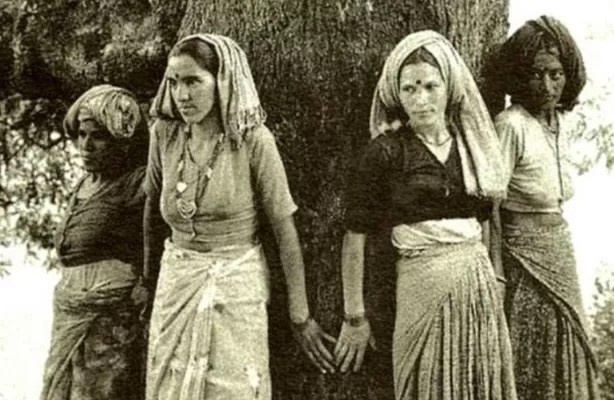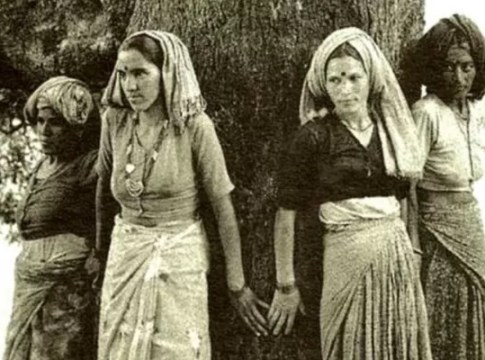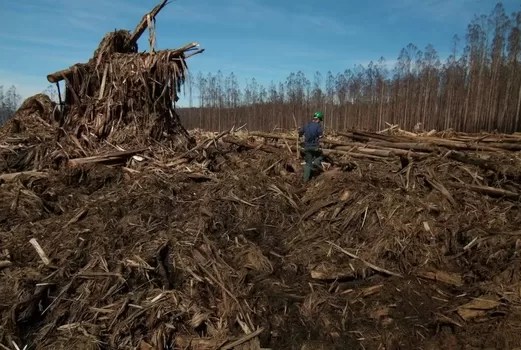Chipko movement, also called Chipko andolan, is a nonviolent social and ecological movement created by rural villagers, particularly women, in India in 1973. Chipko aim is to protect trees and forests slated for government-backed logging.
The Chipko movement literally means ‘tree hugger’ so it is not the insult that some people use it as. Chipko set the precedent for non-violent direct action (NVDA) protests used by many environmental movements all over the world.
On 25 March 1974, the men of Reni village were lured by the government and forestry contractors to a fictional compensation payment site more than 100km away, while back in Reni, truckloads of labourers arrived to start logging operations.
Twenty seven of the village women confronted the loggers who abused and threatened them with guns. The women hugged the trees to stop them from being felled and then kept an all-night vigil guarding their trees against the loggers.
The next day, when the men of the village returned, news of the Chopko movement spread to the neighbouring villages and more people joined in. After a four-day stand-off, the loggers left without cutting down the trees.
The Chief Minister eventually ruled in favour of the villagers. Over the next decade, the Chopko movement’s ethic of non-violent direct action spread across the Himalayas and then throughout the world. Larger social issues of ecological and economic exploitation were included.
Women were at the forefront of the Chipko movement because they were most affected by rampant deforestation which led to a lack of fodder, firewood, and water for drinking and irrigation. Women then became primary stakeholders in the afforestation work that followed after the Chipko movement was successful in stopping the logging.
Chipko inspired many environment and social groups to use non-violent direct action to help slow down deforestation, increase social and ecological awareness, expose vested interests, and demonstrate the viability of people power. They used the slogan “Ecology is the permanent economy”.
In 1987 the Chipko movement was awarded a Right Livelihood Award “for its dedication to the conservation, restoration and ecologically-sound use of India’s natural resources.” The Right Livelihood Award is an international award to honour and support those offering practical and exemplary answers to the most urgent challenges facing us today.

Chipko influence in Australia
One of the pioneers of the modern green movement, Bob Brown, says Chipko was an inspiration in the early days of environment protests in Australia.
Direct action was in its infancy in the late 1970s with forest protests at Terania Creek and Nightcap in New South Wales, and the Franklin River dam protests in 1982.
“Chipko was much talked about and was in the parlance of all the groups preparing for the Franklin”
“It’s also very notable I think, the majority role that women play in peaceful protests everywhere, and they certainly were the majority at the Franklin River — women made up about 75 per cent.”
“It’s 100 per cent certain that we are going to see much more widespread, peaceful protest around the planet — a la Chipko — particularly as the climate crisis and extinction of species grows from a trickle into a cataract.”
Former leader of the Greens in Australia, Bob Brown
Australian tree sitting protests
On 14 December 2011, Miranda Gibson climbed up a tree onto a makeshift platform 60 metres in the air in the Tyenna Forest in Tasmania, where she stayed for 449 days until February 2013, when the Australian government announced a world heritage listing nomination for an extra 170,000 hectares of Tasmanian forest.
“People can go in there, put their bodies on the line and the logging literally stops”
Miranda Gibson said.
A month after the announcement, 15 months after climbing the tree, and just before the world heritage listing was signed, Miranda Gibson came down from her tree-top … only because of a bushfire nearby.
The first Australian tree-sit was in 1983 by the Nomadic Action Group blocking work on the Cape Tribulation to Bloomfield Road in North Queensland, Australia.
Other examples of Australian tree sitters include:
° the Tasmanian Wilderness Society at Farmhouse Creek in the Tasmanian South West Wilderness (1986-87);
° Nullica State Forest (April–August 1989);
° Tree sits were occupied in continuous shifts from the beginning of September 1989 until October 1990 in Coolangubra State Forest near Eden;
° In Western Australia, tree sits were used at Ludlow Tuart Forest near Busselton (2004); “Arcadia” Jarrah Forest near Collie (2006) where two activists were arrested, one had their charges dropped while the other was acquitted; and in College Grove, Bunbury (2008) which was occupied for three months.
Related stories
Where did the term “Woke” come from? What does Woke mean?
Midcoast Council Votes to Save Bulga Forest on Biripi Country
Lola Koala’s tree-sit in Bulga Forest continues a tradition of forest protest
Forest defenders and climate activists arrested in Bulga State Forest
Bulga Forest defender has case dismissed in Forster court
Locals protest NSW Forestry logging in Bulga Forest
Flawed habitat maps could derail government plans to save the Koala
Knitting Nanna blocks saw mill & stops logging trucks




